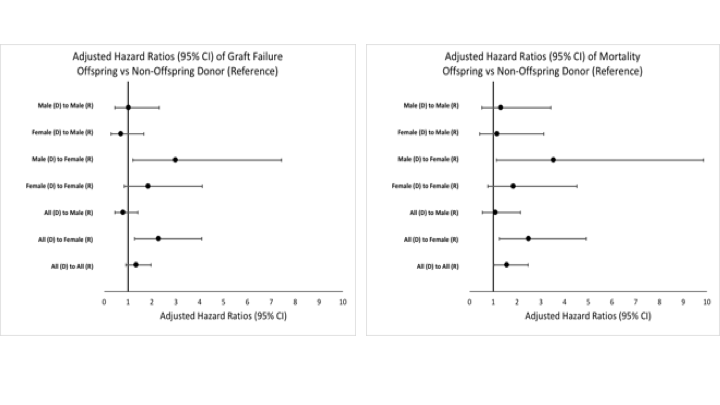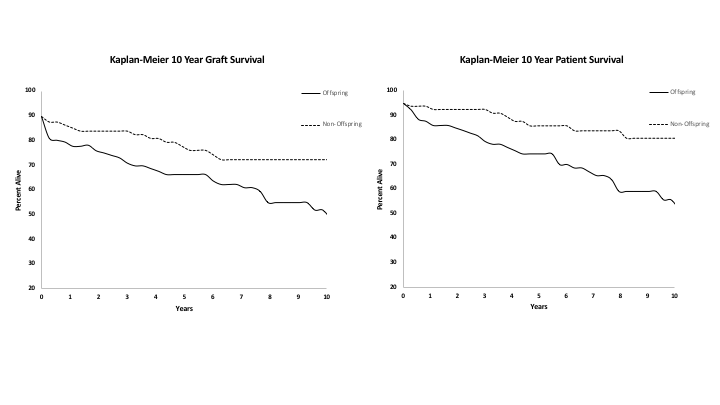Inferior Graft and Patient Survival Following Offspring to Parent Living Donor Liver Transplantation
R. A. Choudhury, A. Dagan, H. Yaffe, D. Yoeli, E. A. Pomfret, T. L. Nydam
Transplant Surgery, University of Colorado, Aurora, CO
Meeting: 2019 American Transplant Congress
Abstract number: B336
Keywords: Liver, Liver grafts, Liver transplantation, Living-related liver donors
Session Information
Session Name: Poster Session B: Liver: Living Donors and Partial Grafts
Session Type: Poster Session
Date: Sunday, June 2, 2019
Session Time: 6:00pm-7:00pm
 Presentation Time: 6:00pm-7:00pm
Presentation Time: 6:00pm-7:00pm
Location: Hall C & D
*Purpose: Offspring (donor) to parent (recipient) transplant is the most common form of living donor liver transplant in the United States. Following living donor kidney transplantation Female recipients of offspring living kidney allografts have been demonstrated to have inferior outcomes, which is believed to be related to issues of female recipient to offspring alloimmunization during pregnancy. It is unknown whether this same phenomenon occurs following liver donor liver transplantation.
*Methods: A retrospective analysis was completed including all recipients of a living donor liver transplant from January 1990 to January 2018 in the OPTN/UNOS database. Patients were grouped as having received a donor liver allograft from an offspring or a non-offspring, with exactly three HLA matches, as would be expected between an offspring and parent. Graft and patient survival were analyzed using Cox proportional hazards modeling.
*Results: Among recipients with exactly three HLA matches with their donor, 282 offspring to parent and 251 non-offspring donor liver transplants were performed. Female recipients of offspring liver allografts had both inferior 10-year graft (52% vs 72%, P<0.001) and patient survival (52% vs 81%, P<0.001) compared with female recipients of non-offspring allografts. No such difference in outcomes was discovered amongst male recipients. A stratified analysis of sex of offspring donors to female recipients demonstrated that male gender was associated with graft failure (HR=2.99, P=0.02) and mortality (HR=3.54, P=0.03). Again, this association was not seen with male recipients.
*Conclusions: Among female recipients, offspring to parent living donor liver transplantation yields inferior long-term graft and patient survival. Furthermore, among offspring donors, male gender was strongly associated with inferior outcomes. It is unclear to what extent alloimmunization during pregnancy is associated with these findings. If available, non-offspring to recipient living donor liver transplant should be favored.
To cite this abstract in AMA style:
Choudhury RA, Dagan A, Yaffe H, Yoeli D, Pomfret EA, Nydam TL. Inferior Graft and Patient Survival Following Offspring to Parent Living Donor Liver Transplantation [abstract]. Am J Transplant. 2019; 19 (suppl 3). https://atcmeetingabstracts.com/abstract/inferior-graft-and-patient-survival-following-offspring-to-parent-living-donor-liver-transplantation/. Accessed November 20, 2025.« Back to 2019 American Transplant Congress


